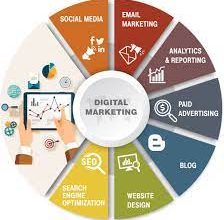Personalized marketing has emerged as a powerful strategy for engaging audiences and achieving business success. With dozens of brands vying for attention, the era of one-size-fits-all approaches and traditional marketing has become obsolete. This is because consumers have a strong desire for more personal interactions with brands. Personalized marketing provides a customized and genuine experience that deeply connects with customers individually. This guide provides in-depth knowledge of personalized marketing content campaigns, their strategies, importance, fundamental principles, and the significant effects they have on businesses and consumers, highlighting how it can serve as a crucial strategy that enables brands to succeed in a highly competitive and constantly changing digital environment. We’ll also look at personalized marketing emails while considering a few campaign strategies.
What Is Personalized Marketing?
Personalized marketing is a marketing strategy that tailors content, product recommendations, and advertising to meet the specific needs, preferences, and characteristics of individual customers. It involves using data analytics, customer behavior, and demographics to create personalized experiences, which can include personalized emails, targeted advertisements, product suggestions, and more. The goal is to enhance customer engagement, improve customer satisfaction, and increase conversion rates by delivering relevant and timely content to each individual consumer.
Understanding Personalized Marketing
The goal of personalized marketing is to enhance the customer experience and engagement by providing content and offers that are more relevant and appealing to each individual. This, in turn, can lead to increased customer loyalty, higher conversion rates, improved customer satisfaction, and a competitive advantage in the market.
The process of personalized marketing involves collecting and analyzing customer data, such as purchase history, browsing behavior, demographics, and interactions with the brand. This data is then used to segment customers into distinct groups based on their interests and behavior. Once the customer segments are identified, personalized marketing strategies are employed to engage each group effectively. These strategies may include sending personalized emails, displaying targeted ads, suggesting products based on past purchases, or customizing website content to match individual preferences.
As much as personalized marketing is effective, it must be done with respect for customer privacy and data protection. Customers should have the option to control their data and opt out of personalized marketing if they choose to do so. Respecting these boundaries is essential to maintaining trust with customers and ensuring the success of personalized marketing efforts
Personalized Marketing Process
The personalized marketing process involves several key steps that effectively deliver tailored experiences to individual customers. When businesses adopt these steps, they can create meaningful connections with their customers, drive higher engagement, and ultimately achieve better marketing outcomes through personalized marketing. The following is a general outline of the process:
#1. Data Collection
The process begins with collecting relevant data about customers. This data may include demographics, purchase history, browsing behavior, social media interactions, and any other information that provides insights into customer preferences and interests.
#2. Data Analysis
Once the data is collected, it needs to be analyzed to identify patterns, trends, and customer segments. Data analysis helps group customers based on similarities, allowing marketers to understand their needs better.
#3. Customer Segmentation
With data analysis, customers are segmented into distinct groups based on their characteristics and behaviors. These segments form the foundation for delivering personalized marketing efforts to each group.
#4. Content Personalization
Using customer segments as a guide, marketers create personalized content and product recommendations. This could include personalized emails, targeted advertisements, dynamic website content, and individualized product offers.
#5. Delivery of Personalized Content
The personalized content and offers are then delivered to the respective customer segments through various marketing channels. This could be through email campaigns, social media, website banners, or mobile app notifications.
#6. Real-Time Personalization
Some advanced personalized marketing strategies utilize real-time data to deliver immediate personalized experiences. For example, a website may display product recommendations based on a customer’s current browsing behavior.
#7. Performance Measurement
After implementing personalized marketing efforts, it’s crucial to measure their effectiveness. Key performance indicators (KPIs) such as conversion rates, click-through rates, and customer engagement metrics are tracked to assess the success of the personalized campaigns.
#8. Iterative Improvement
Based on performance metrics and customer feedback, marketers continuously refine and optimize personalized marketing strategies. This iterative process ensures that marketing efforts remain relevant and effective over time.
#9. Respect for Privacy
Throughout the entire process, customer privacy and data protection should be top priorities. Complying with data regulations and giving customers control over their data is essential to maintaining trust and respecting their preferences.
Why Is Personalized Marketing Important?
Personalized marketing is important because it fosters stronger connections between brands and customers, resulting in a more efficient and effective marketing approach. The following are some of the reasons why personalizing marketing is important:
- Enhanced Customer Experience
- Increased Customer Engagement
- Improved Conversion Rates
- Customer Loyalty and Retention
- Better Marketing ROI
- Data-Driven Insights
- Competitive Advantage
- Reduced Ad Fatigue
Personalized Marketing Content
Personalized marketing content refers to marketing materials and messages that are tailored to meet the specific interests, preferences, and characteristics of individual customers. Instead of delivering a one-size-fits-all message to a broad audience, personalized marketing content aims to create a more relevant and engaging experience for each individual. The aim of personalized marketing content is to enhance the overall customer experience, increase engagement, and drive conversions by delivering content that feels more relevant and valuable to each individual. However, it is essential to strike a balance between personalization and privacy, ensuring that customers’ data is handled responsibly and respecting their preferences for data usage.
Examples of Personalized Marketing Content
The following are some examples of personalized marketing content:
- Personalized Emails: Sending personalized emails that address customers by their names and include product recommendations based on their past purchases or browsing history.
- Targeted Advertisements: Displaying ads to specific customer segments, by presenting products or offers that align with their interests and behaviors
- Dynamic Website Content: Customizing website content based on a customer’s past interactions, such as showing related products or content based on their browsing history.
- Personalized Product Recommendations: Using a customer’s purchase history and preferences to suggest products they might be interested in during their online shopping journey.
- Location-Based Offers: Sending location-based offers or promotions to customers based on their geographic location.
- Tailored Social Media Content: Customizing social media posts to resonate with specific customer segments, addressing their needs and preferences.
- Individualized Loyalty Rewards: Providing personalized loyalty rewards based on a customer’s previous purchases and engagement with the brand.
- One-to-One Messaging: Engaging in one-to-one conversations with customers through live chat or messaging apps, addressing their inquiries and needs directly.
- Customized Landing Pages: Designing landing pages that align with a customer’s interests or the specific marketing campaign they interacted with.
- Time-Sensitive Offers: Sending time-sensitive promotions to customers who have shown interest in a particular product, encourages them to make a purchase.
What Is the Biggest Advantage of Personalization?
The biggest advantage of personalization is its ability to enhance the overall customer experience. By tailoring content, product recommendations, and marketing efforts to individual customers’ preferences, needs, and behaviors, businesses can create more meaningful interactions and build stronger connections with their audience.
What Are the Different Types of Personalized Marketing?
The following are some of the types of personalized marketing:
- Personalized Emails
- Targeted Advertisement
- Dynamic Website Content
- Individualized Product Recommendations
- Customized Landing Pages
- Personalized Social Media Content
- Location-Based Offers
- Real-Time Notifications
- Loyalty Program Rewards
- Personalized Recommendations in Mobile Apps
- Personalized Content Marketing
- Personalized Video Content
What Is an Example of a Personalization Strategy?
One example of a personalization strategy is a personalized email campaign.
Personalized Marketing Campaign
A personalized marketing campaign is a strategic initiative designed to deliver tailored messages, content, and offers to individual customers or targeted segments. The goal of such a campaign is to enhance customer engagement, increase conversions, and improve overall marketing effectiveness by addressing the unique preferences and needs of each recipient.
The following is an overview of how a personalized marketing campaign might be executed:
#1. Defining Campaign Objectives
The first step is to determine the specific objectives of the campaign. It could be to boost sales of a particular product, increase website visits, encourage repeat purchases from existing customers, or attract new customers.
#2. Data Collection and Analysis
Gathering relevant customer data is crucial for personalization. This data can include past purchase history, browsing behavior, demographics, location, and interactions with previous marketing efforts. The data is then analyzed to identify customer segments and individual preferences.
#3. Customer Segmentation
Based on the data analysis, the customers are segmented into different groups with shared characteristics or interests. Each segment will receive personalized content that caters to their unique needs.
#4. Content Creation
With the segments defined, the marketing team creates personalized content, such as customized emails, targeted advertisements, website banners, or social media posts. The content is tailored to address the interests and preferences of each group.
#5. Delivery Timing and Channels
The campaign manager determines the best timing for delivering personalized content to each segment. Different channels like email, social media, a website, or mobile app notifications might be utilized, depending on the customer’s preferred communication channel.
#6. Dynamic Content
For some channels, like emails or websites, dynamic content may be employed to display different content elements based on individual customer data, making the experience even more personalized.
#7. Testing and Optimization
Before launching the campaign, A/B testing might be conducted to assess different versions of content or offers. This helps identify the most effective elements and allows for optimization.
#8. Campaign Execution
Once everything is set, the campaign is launched, and personalized content is delivered to each segment as planned.
#9. Monitoring and Analysis
Throughout the campaign, key performance metrics are tracked and analyzed. Metrics such as click-through rates, conversion rates, and customer engagement help evaluate the campaign’s success.
#10. Iterative Improvements
Based on the campaign’s performance, insights are gathered to make data-driven improvements for future personalized marketing efforts.
How Effective Is Personalized Marketing?
Personalized marketing can be highly effective. By tailoring marketing messages and content to individual preferences, behaviors, and demographics, businesses can create a more engaging and relevant experience for their customers. This approach often leads to higher conversion rates, increased customer loyalty, and improved overall satisfaction. However, it’s crucial to strike a balance between personalization and privacy concerns to ensure that customers feel comfortable and are not overwhelmed by targeted advertising.
Do People Like Personalized Marketing?
Opinions on personalized marketing vary among individuals. Some people appreciate personalized marketing because it offers relevant product recommendations and promotions, making their shopping experience more convenient and enjoyable. They see it as a way for businesses to understand their customers’ needs better.
Personalized Marketing Emails
Businesses use personalized marketing emails as a strategy to cater email communication to specific recipients based on their preferences, behavior, and demographic information. The goal is to create more relevant and engaging email content that resonates with the recipient, leading to higher open rates, click-through rates, and ultimately, better conversion rates. By leveraging data and segmentation techniques, personalized marketing emails can help businesses build stronger relationships with their customers and prospects. Personalized marketing emails leverage customer data to create targeted and relevant content for individual recipients. This approach can lead to improved engagement, increased customer loyalty, and better overall email marketing performance for businesses. However, it’s essential to strike a balance and avoid being overly intrusive or crossing privacy boundaries while implementing personalized marketing strategies.
Strategies of Personalized Marketing
The following are some key elements and strategies involved in personalized marketing emails:
#1. Data Collection and Segmentation
Personalization begins with collecting relevant data about your email recipients. This data can include basic information like name, location, and gender as well as more in-depth details like purchase history, website behavior, and engagement with previous emails. Once you have this data, you can segment your email list into smaller groups based on specific criteria, allowing you to send targeted messages.
#2. Dynamic Content
Dynamic content refers to the ability to display different content within the same email based on the recipient’s data or behavior. For example, you can show different product recommendations to customers who have previously purchased different types of items. Dynamic content helps make the email more relevant to each individual, increasing the chances of engagement.
#3. Personalized Subject Lines
The subject line is the first thing recipients see in their inboxes. Personalizing it with the recipient’s name or mentioning specific details related to their preferences can capture their attention and increase the likelihood of the email being opened.
#4. Recommendation and Upsell Emails
Using data from previous purchases or browsing history, businesses can send personalized product recommendations or upsell emails. These recommendations are based on the recipient’s interests and behavior, increasing the chances of conversion.
#5. Abandoned Cart Emails
When a customer adds items to their cart but doesn’t complete the purchase, personalized emails can be sent as a gentle reminder, including the specific items left behind and possibly offering incentives like discounts or free shipping.
#6. Event-Based Emails
Sending personalized emails on special occasions like birthdays, anniversaries, or membership milestones can make customers feel valued and appreciated.
#7. Location-Based Targeting
If you have brick-and-mortar stores, you can use location data to send personalized emails promoting local events, deals, or store openings in the recipient’s area.
#8. A/B Testing
Personalized marketing emails can also benefit from A/B testing, where you send different versions of an email to different segments of your audience to see which one performs better. This helps you optimize your email content and strategies over time.
#9. Privacy and Data Protection
It’s crucial to handle customer data responsibly and ensure compliance with privacy regulations, such as GDPR or CCPA. Be transparent about data collection and offer an easy way for recipients to opt out of personalized emails if they wish to.
- MARKETING STRATEGIES FOR ECOMMERCE BUSINESS
- PERSONALIZATION eCOMMERCE: Best Techniques and Benefits
- EMAIL MARKETING TOOLS: The Top 10+ Automation Tools (+Free Tips)
- WHAT IS CUSTOMER SUPPORT: Definition, Types, and Benefits
- The top digital marketing trends to watch for in 2023






